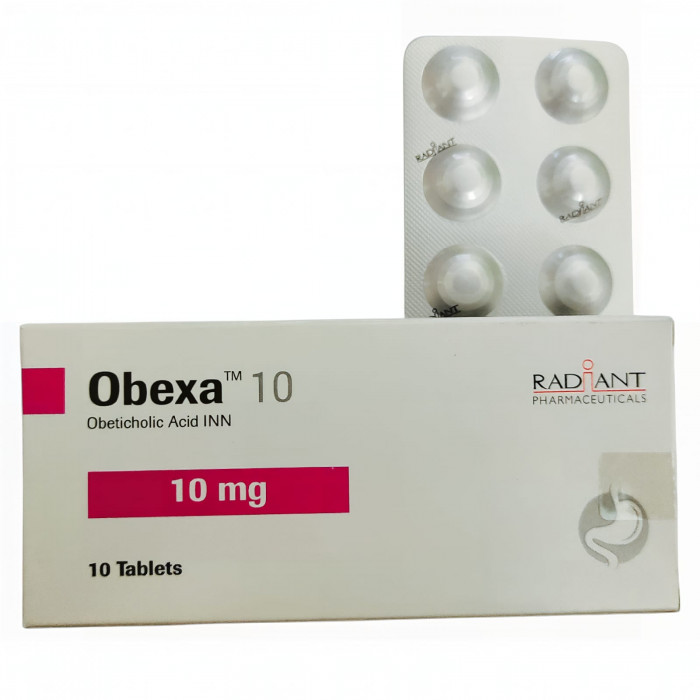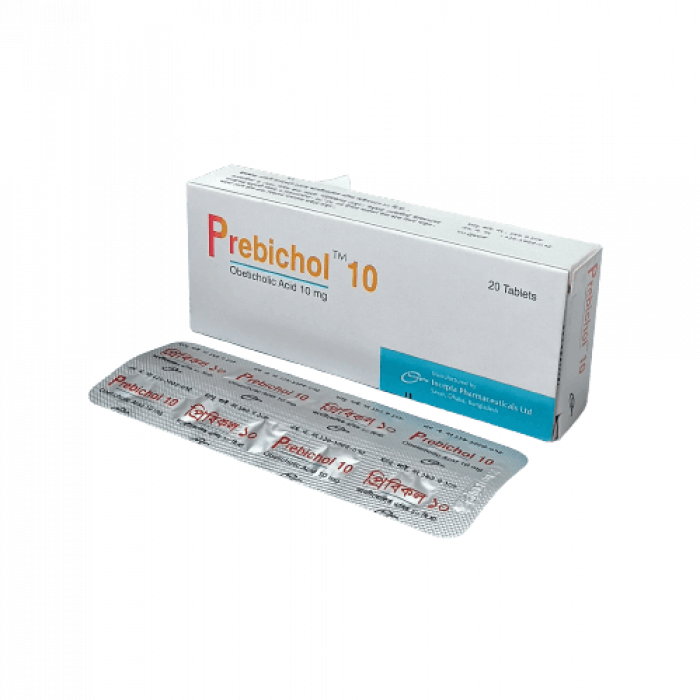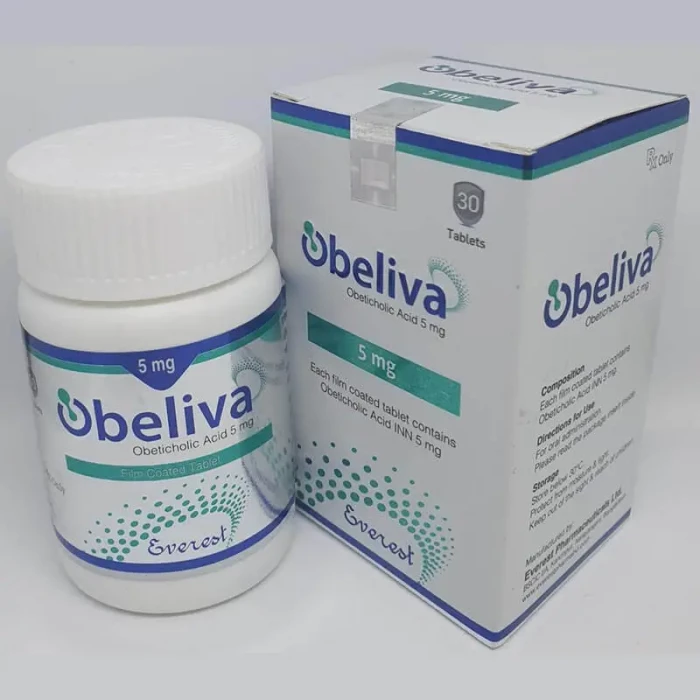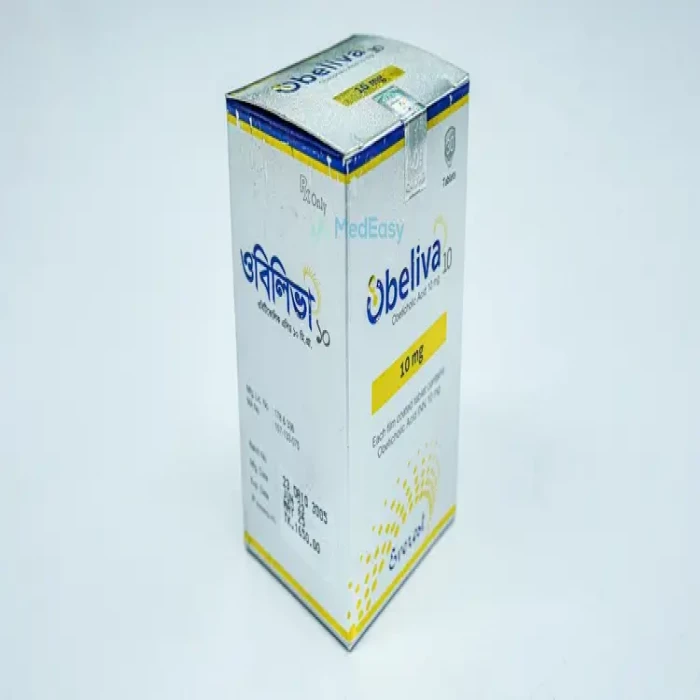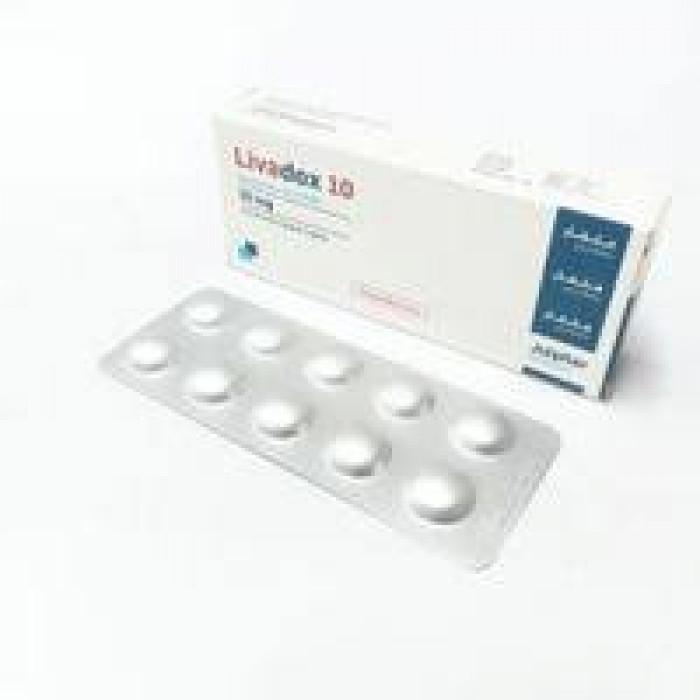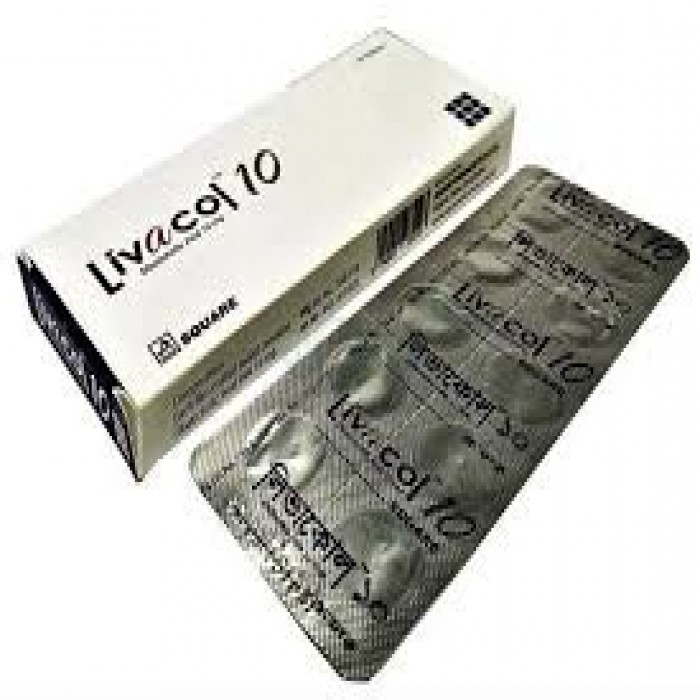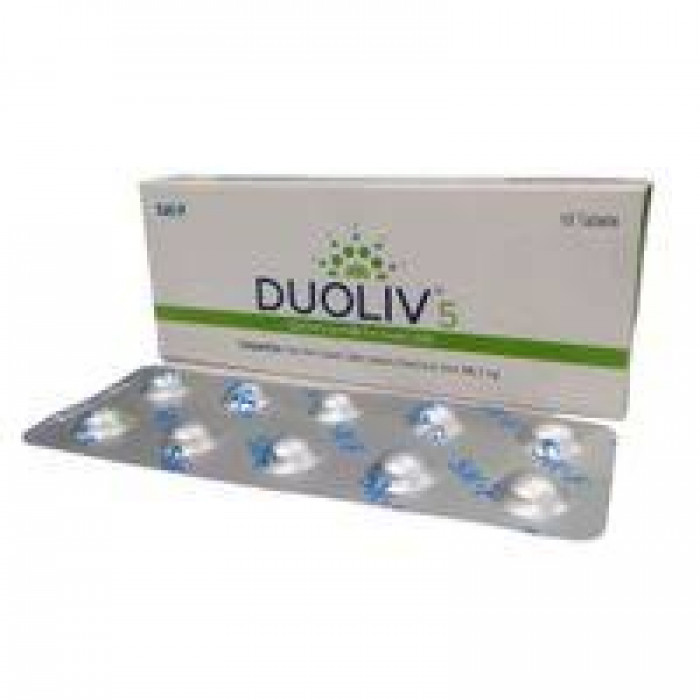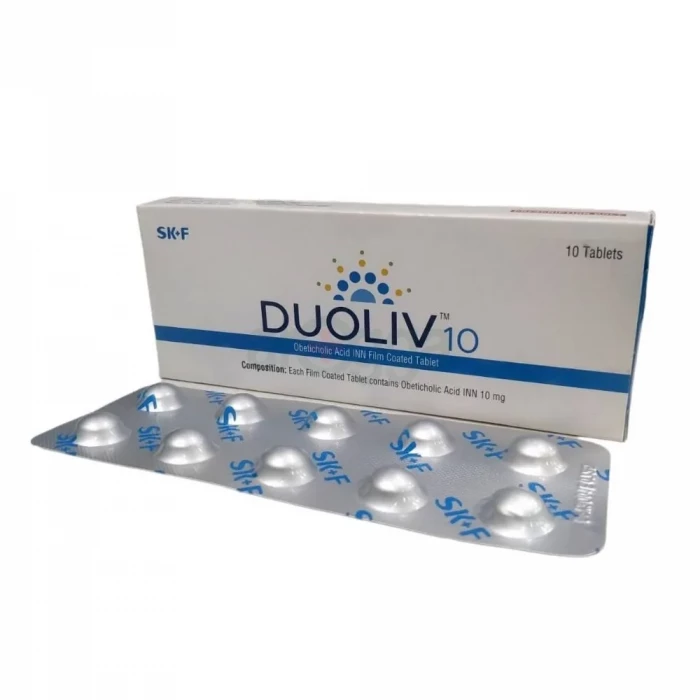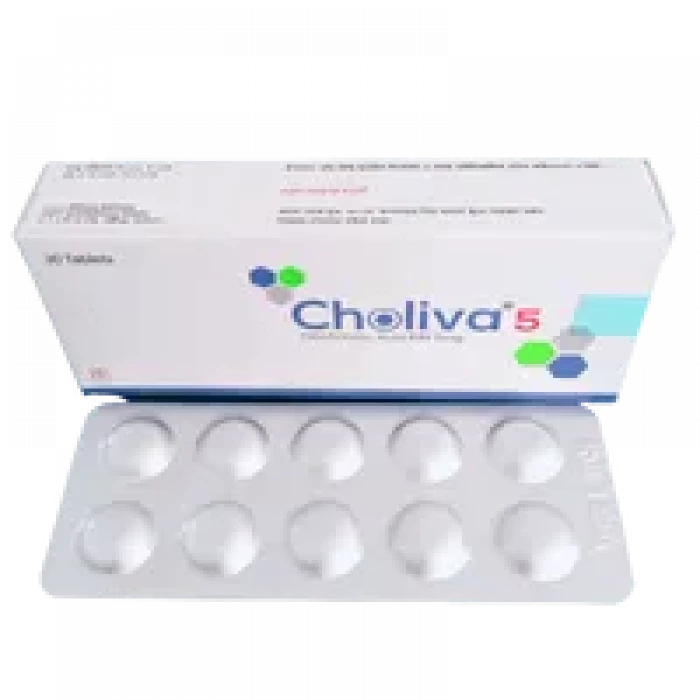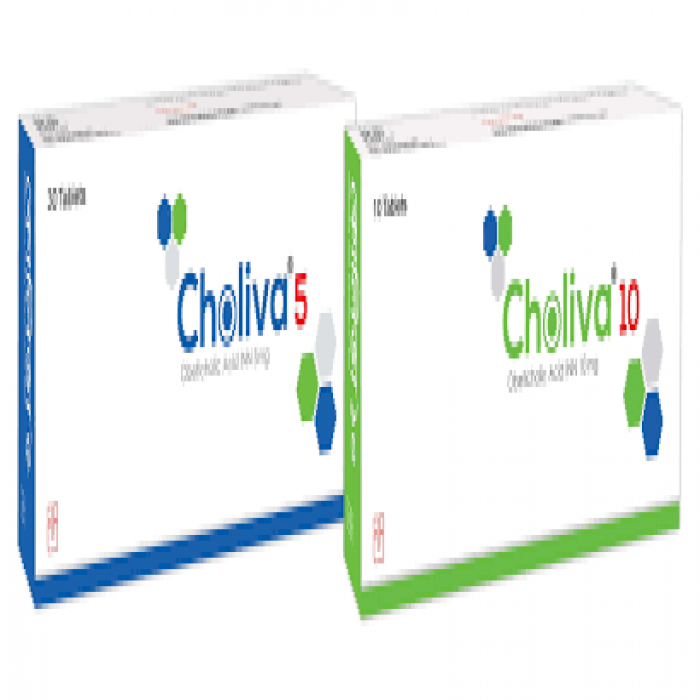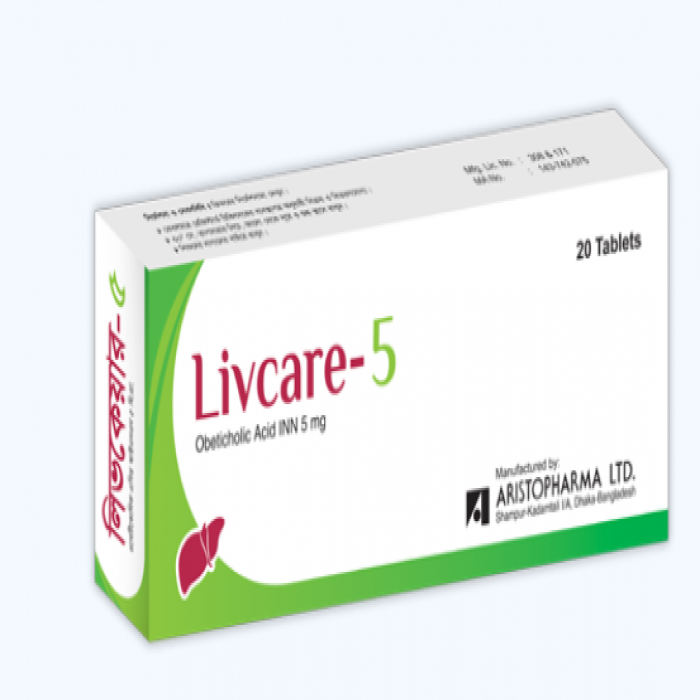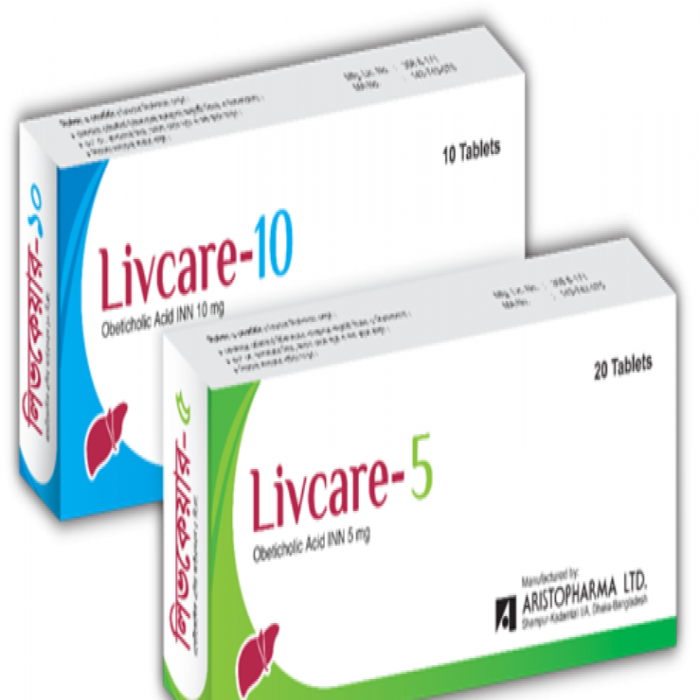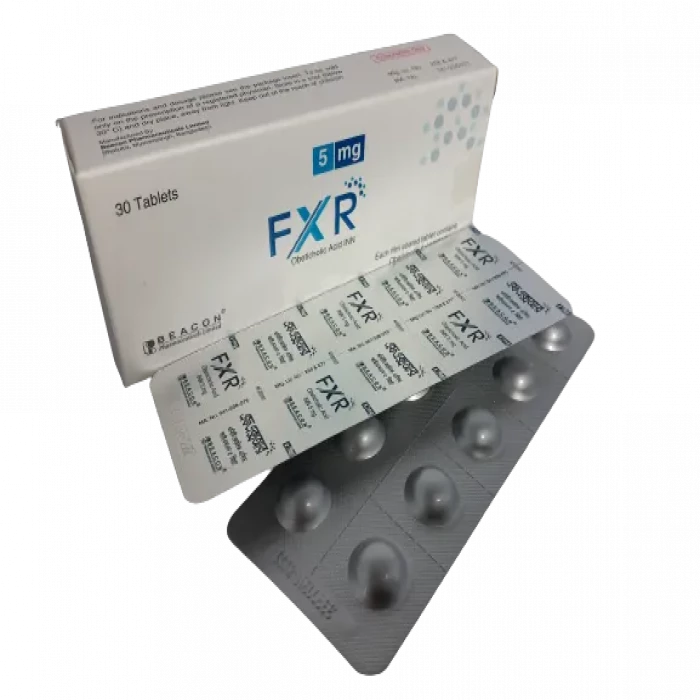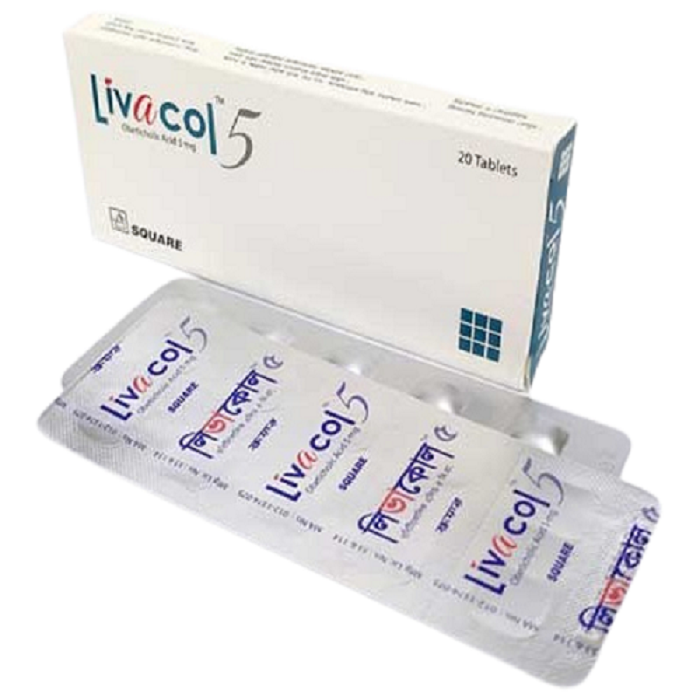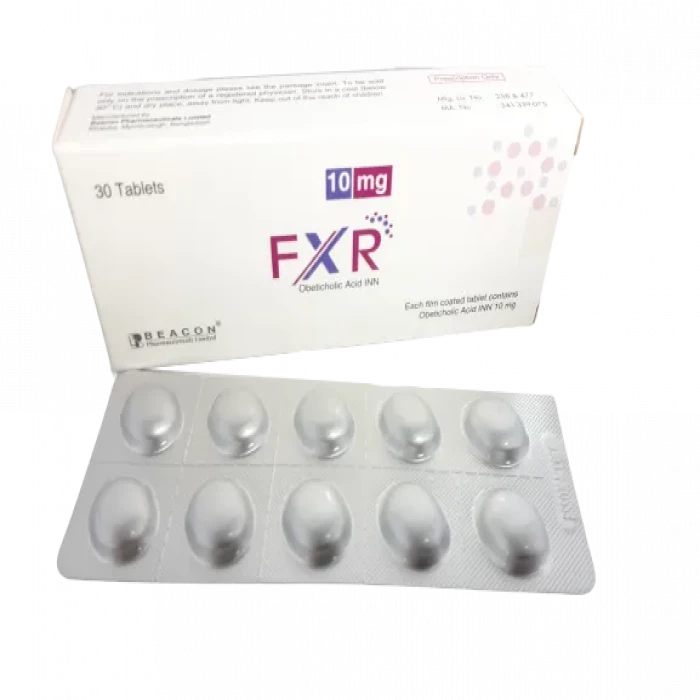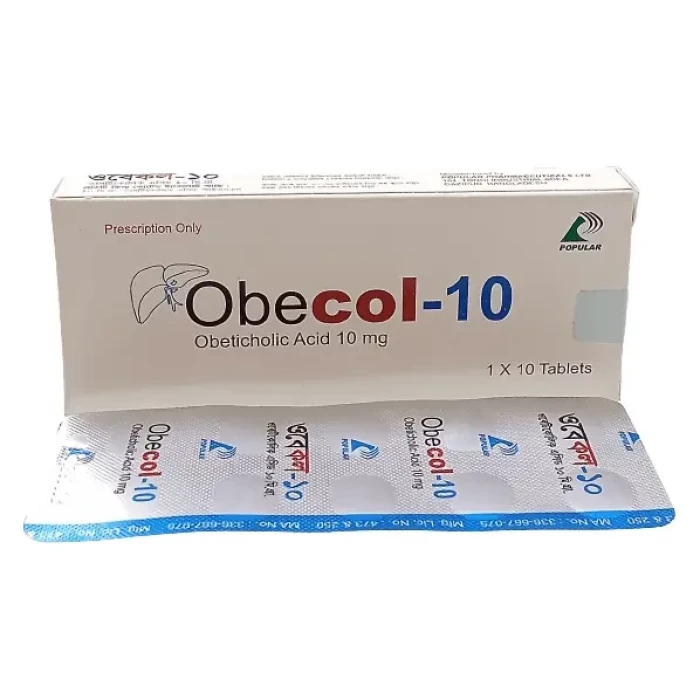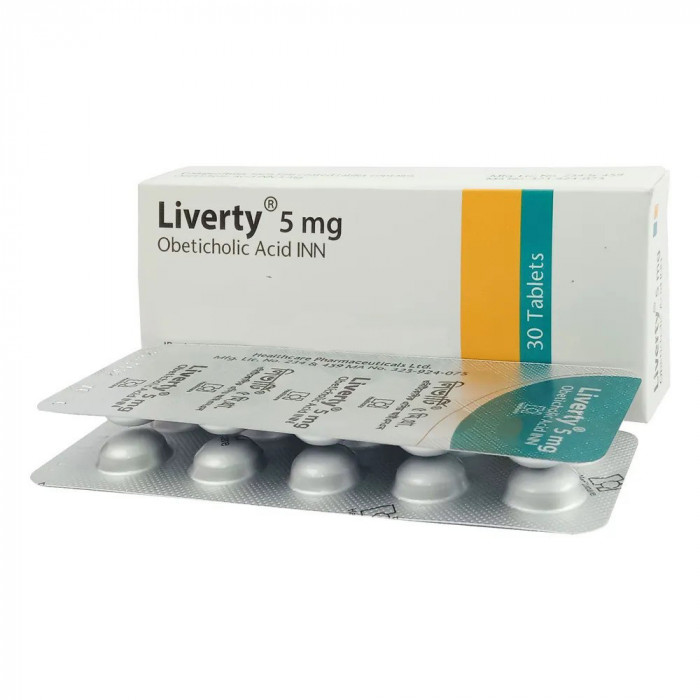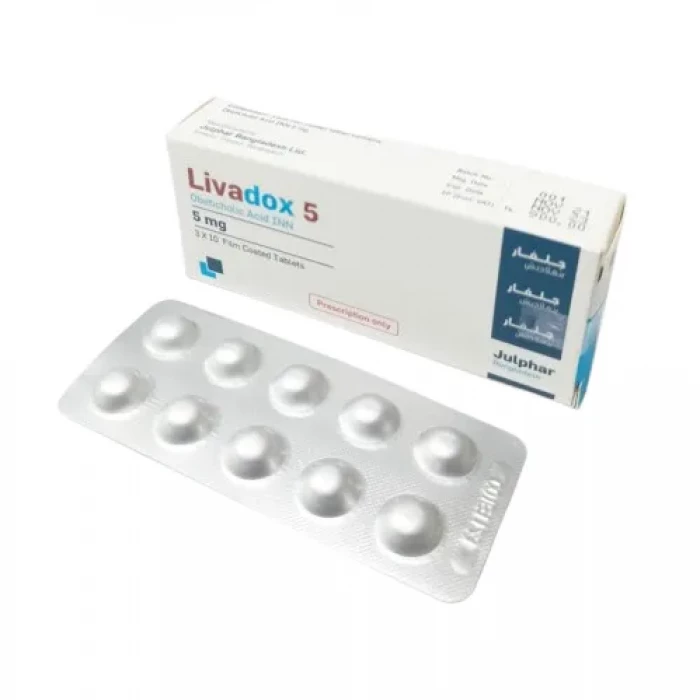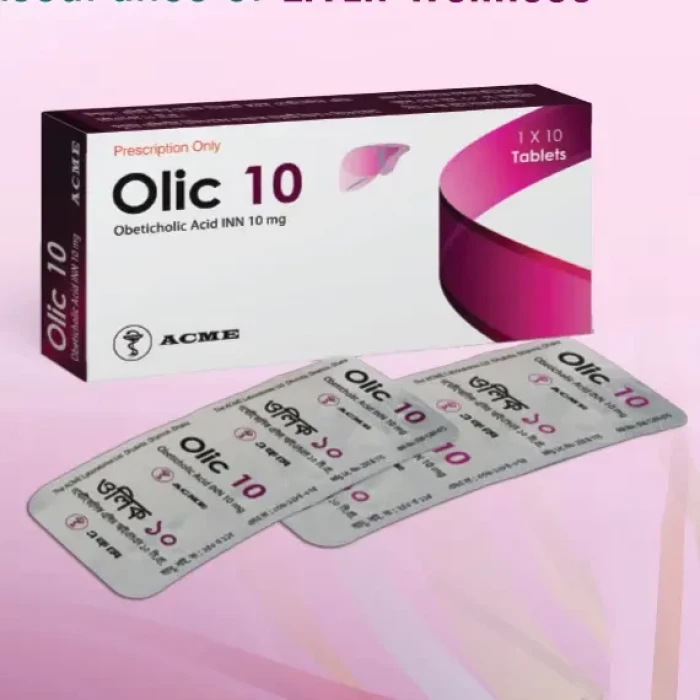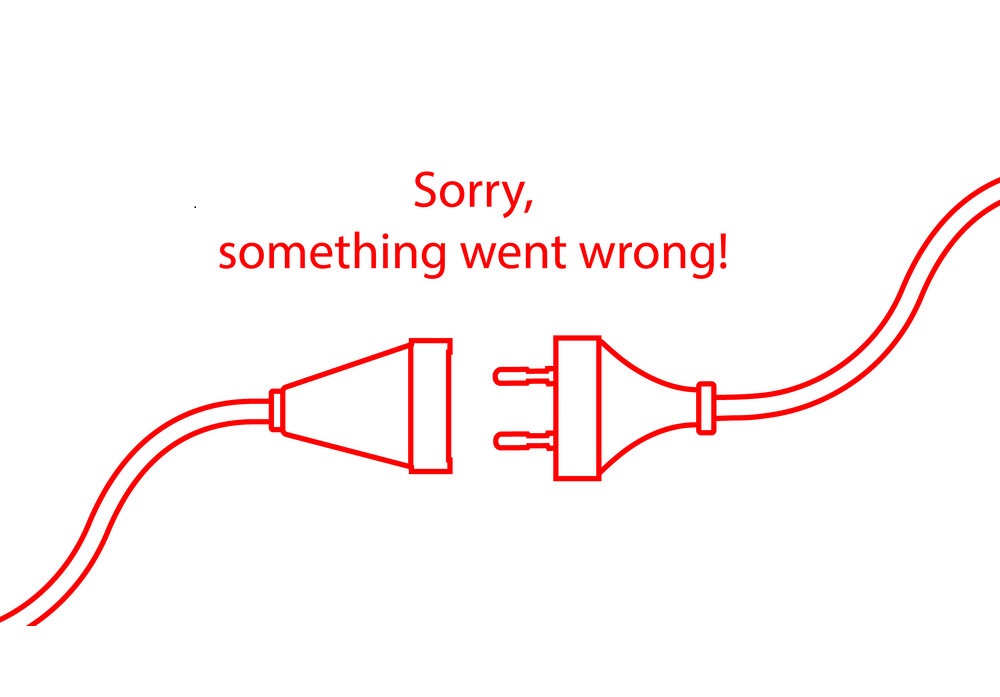
✔ 100% Authentic Product
👁️ Currently Viewing 287
Obeticholic Acid 5-
Pediatric Use:
Safety and efficacy have not been established in children.
Geriatric Use:
No major differences in safety or effectiveness were observed in elderly patients (≥65 years), although increased sensitivity cannot be ruled out.
Hepatic Impairment:
Ocaliva is contraindicated in patients with decompensated cirrhosis or portal hypertension. Dose-related hepatic reactions have been observed in clinical studies; close biochemical monitoring is mandatory.
Discount
Price: ৳ 98
MRP:
৳
100
2%
Off

100% Genuine Products, Guaranteed

Safe & Secure Payments, Always

Fast, Secure & Efficient Delivery

Proper Packaging
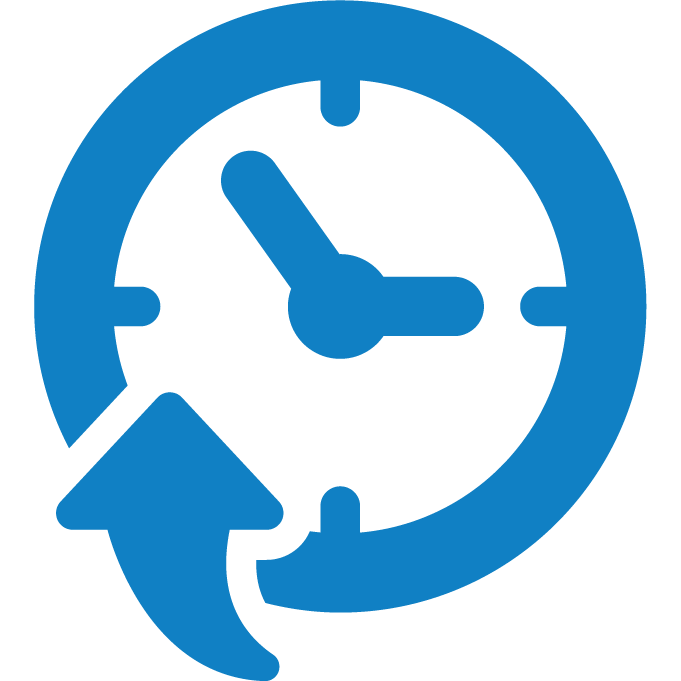 Cash on Delivery - All over Bangladesh
Cash on Delivery - All over Bangladesh Regular Delivery - 12-24 Hours, Dhaka City* Charge Tk.39-59
Regular Delivery - 12-24 Hours, Dhaka City* Charge Tk.39-59 Regular Delivery - 24-48 Hours, Other Cities* Charge Tk.99-110
Regular Delivery - 24-48 Hours, Other Cities* Charge Tk.99-110
 ফ্রি ডেলিভারিঃ - ৯৯৯ টাকা+ অর্ডারে, ঢাকা
শহরে
ফ্রি ডেলিভারিঃ - ৯৯৯ টাকা+ অর্ডারে, ঢাকা
শহরে ফ্রি ডেলিভারিঃ - ২৯৯৯ টাকা+ অর্ডারে, ঢাকার
বাহিরে
ফ্রি ডেলিভারিঃ - ২৯৯৯ টাকা+ অর্ডারে, ঢাকার
বাহিরে
100% Genuine Products, Guaranteed
Safe & Secure Payments, Always
Fast, Secure & Efficient Delivery
Proper Packaging
 Cash on Delivery - All over Bangladesh
Cash on Delivery - All over Bangladesh Regular Delivery - 12-24 Hours, Dhaka City* Charge Tk.39-59
Regular Delivery - 12-24 Hours, Dhaka City* Charge Tk.39-59 Regular Delivery - 24-48 Hours, Other Cities* Charge Tk.99-110
Regular Delivery - 24-48 Hours, Other Cities* Charge Tk.99-110 ফ্রি ডেলিভারিঃ - ৯৯৯ টাকা+ অর্ডারে, ঢাকা
শহরে
ফ্রি ডেলিভারিঃ - ৯৯৯ টাকা+ অর্ডারে, ঢাকা
শহরে ফ্রি ডেলিভারিঃ - ২৯৯৯ টাকা+ অর্ডারে, ঢাকার
বাহিরে
ফ্রি ডেলিভারিঃ - ২৯৯৯ টাকা+ অর্ডারে, ঢাকার
বাহিরে
✅ Description:
Ocaliva is prescribed for the treatment of adult patients with primary biliary cholangitis (PBC) who:
Do not have cirrhosis, or
Have compensated cirrhosis without any clinical evidence of portal hypertension.
It is recommended for use:
In combination with ursodeoxycholic acid (UDCA) in patients showing an inadequate response to UDCA, or
As monotherapy in patients intolerant to UDCA.
High doses (25–50 mg daily, 2.5–5× the recommended limit) have been associated with hepatotoxicity, ascites, jaundice, and PBC flare-ups.
If overdose occurs, discontinue Ocaliva immediately and provide supportive management with close observation of hepatic parameters.
✔️ Pharmacology:
Mechanism of Action:
Obeticholic acid, the active component of Ocaliva, functions as a potent agonist of the Farnesoid X Receptor (FXR) — a nuclear receptor expressed primarily in the liver and intestine.
FXR plays a vital role in regulating bile acid synthesis, inflammation, fibrosis, and metabolic processes.
Upon activation, FXR:
Reduces bile acid production by suppressing de novo synthesis from cholesterol.
Promotes bile acid transport out of hepatocytes.
These combined actions decrease intracellular bile acid accumulation, protect liver cells, and enhance bile flow (choleresis) — ultimately reducing hepatic bile acid toxicity.
Pharmacodynamics:
In clinical studies, administration of Obeticholic acid 10 mg once daily led to a 173% rise in FGF-19 levels, a hormone regulating bile acid metabolism. Additionally, concentrations of cholic acid and chenodeoxycholic acid were notably reduced, indicating an improvement in bile acid homeostasis.
At doses 10 times higher than recommended, Obeticholic acid did not cause clinically significant QT interval prolongation, confirming its cardiac safety.
✔️ Dosage & Administration:
Pre-Treatment Assessment:
Before starting Ocaliva, healthcare professionals must determine whether the patient:
Has decompensated cirrhosis (Child-Pugh Class B or C),
Has experienced prior hepatic decompensation, or
Has portal hypertension (ascites, varices, or persistent thrombocytopenia).
Ocaliva is contraindicated in such patients.
Recommended Dosage:
Initial Dose: 5 mg once daily for the first 3 months.
Titration: After 3 months, if there is insufficient improvement in ALP or total bilirubin levels and the patient tolerates therapy well, increase to 10 mg once daily (maximum recommended dose).
Monitoring:
During treatment, patients should be regularly monitored for:
Biochemical response (ALP, bilirubin levels)
Signs of hepatic deterioration or portal hypertension
Tolerability and symptom progression
Discontinue Ocaliva permanently if the patient develops:
Hepatic decompensation,
Portal hypertension,
Complete biliary obstruction, or
Clinically significant hepatic adverse effects.
Management of Pruritus:
For patients developing intolerable itching (pruritus):
Add an antihistamine or bile acid-binding resin.
Reduce dose to:
5 mg every other day (if intolerant to 5 mg daily), or
5 mg once daily (if intolerant to 10 mg daily).
If required, temporarily stop treatment for up to 2 weeks and restart at a lower dose once symptoms improve.
Persistent severe pruritus may necessitate permanent discontinuation.
✔️ Side Effects:
Common side effects include:
Pruritus (itching)
Fatigue
Abdominal pain or discomfort
Other possible reactions:
Rash, joint pain, sore throat, dizziness, constipation, abnormal thyroid function, and eczema.
Most reactions are mild to moderate and manageable with dose adjustment or symptomatic therapy.
✔️ Drug Interactions:
Bile Acid Binding Resins (e.g., cholestyramine, colestipol, colesevelam):
May reduce Ocaliva absorption and efficacy. Administer Ocaliva at least 4 hours before or after these agents.
Warfarin:
Co-administration may reduce INR. Regularly monitor INR and adjust the warfarin dose to maintain the target range.
CYP1A2 Substrates with Narrow Therapeutic Index:
Ocaliva can increase plasma concentrations of drugs metabolized by CYP1A2 (e.g., theophylline, tizanidine). Close therapeutic monitoring is advised.
Inhibitors of BSEP (Bile Salt Efflux Pump):
Avoid concomitant use with cyclosporine or other BSEP inhibitors, as this may cause hepatic bile salt accumulation and toxicity. If unavoidable, closely monitor liver function.
✔️ Ocaliva should not be used in patients with:
- Decompensated cirrhosis (Child-Pugh B or C) or prior hepatic decompensation
- Compensated cirrhosis with portal hypertension
- Complete biliary obstruction
✔️ Use in Pregnancy & Lactation:
Pregnancy:
Human data are limited; no drug-associated risk has been established. Animal studies in rats and rabbits showed no developmental harm at doses up to 13× and 6× human exposure, respectively.
Lactation:
Unknown if Ocaliva passes into human milk. The benefits of breastfeeding should be weighed against the mother’s clinical need for the drug and potential effects on the infant.
✔️ Precautions & Warnings
1. Hepatic Decompensation & Failure:
Cases of hepatic decompensation and liver failure (some fatal or requiring transplantation) have been reported in PBC patients treated with Ocaliva—especially those with cirrhosis or those given higher than recommended doses.
Even at standard doses, decompensation may occur in cirrhotic patients; therefore, close monitoring is essential.
2. Severe Pruritus:
Severe, persistent itching may occur, often requiring medical intervention or dose reduction. In trials, 23% of patients on 10 mg experienced severe pruritus versus 7% on placebo.
3. Reduction in HDL-C:
Ocaliva may cause dose-dependent decreases in HDL cholesterol, typically observed within 2 weeks of initiation.
Monitor lipid levels periodically; reassess therapy if HDL-C drops significantly or if clinical response is inadequate after 1 year.
✔️ Storage Conditions:
Store below 30°C, in a cool, dry place, away from direct light.
Keep out of reach of children.
⚠️Disclaimer:
At ePharma, we’re committed to providing accurate and accessible health information. However, all content is intended for informational purposes only and should not replace medical advice from a qualified physician. Please consult your healthcare provider for personalized guidance. We aim to support, not substitute, the doctor-patient relationship.




